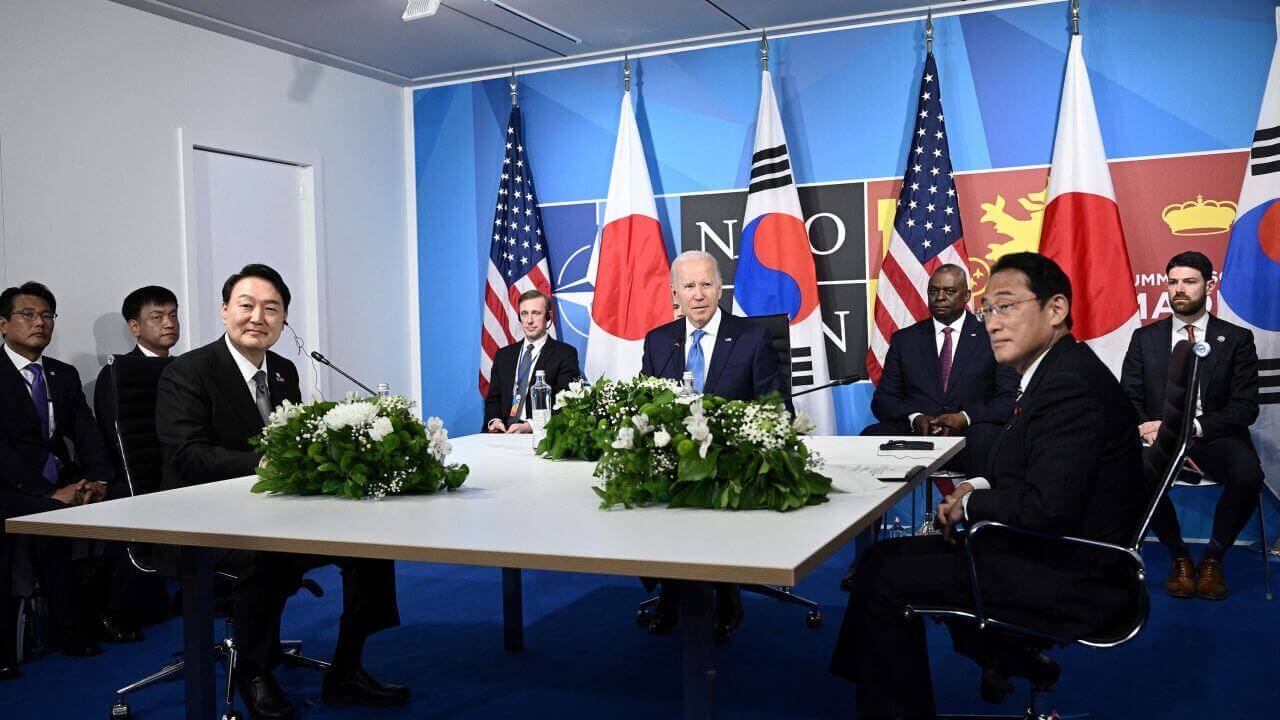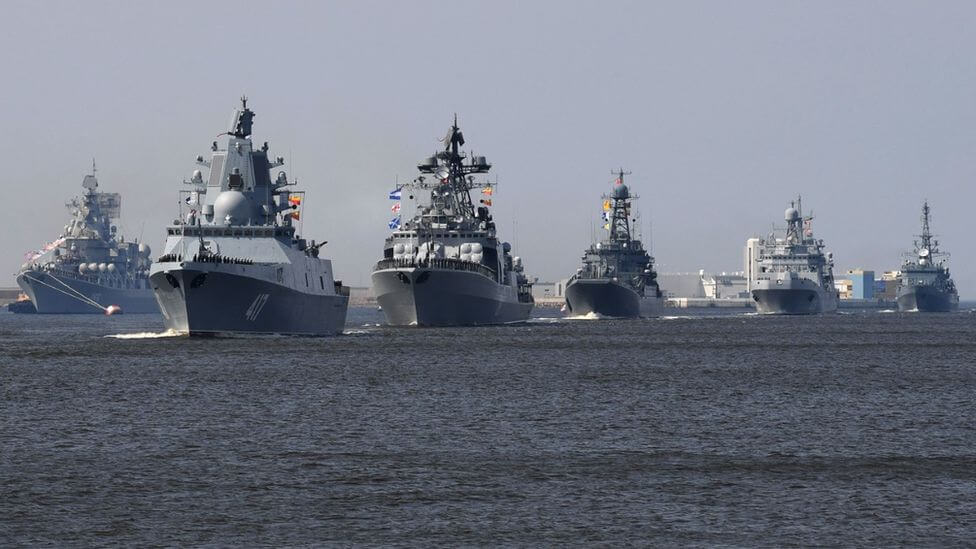Russian & Chinese Warships Sail Near Japanese Islands On The Eve Of US-Japan-South Korea Summit

19 August 2023
As global geopolitical tensions continue to ebb and flow, the recent sighting of Russian and Chinese warships in close proximity to Japanese islands has ignited concerns and raised eyebrows across international diplomatic circles. The timing of this maneuver, occurring on the eve of a significant US-Japan-South Korea summit, adds an additional layer of complexity to an already intricate web of regional relationships and power dynamics.
On the surface, the presence of warships from Russia and China near Japanese waters might be seen as routine naval exercises, a show of force, or a strategic maneuver to underscore their presence in the Pacific region. However, the timing of these maneuvers, just ahead of a high-stakes diplomatic summit, underscores the subtler nuances at play in international politics.
The Geopolitical Landscape
Russia and China’s assertive actions come as no surprise to those following global politics. Both nations have been increasingly expanding their influence and asserting their power in the Asia-Pacific region. China’s assertiveness in the South China Sea and its rapid military modernization have raised concerns among neighboring countries and the United States. Russia, on the other hand, has been keen on maintaining its presence in the Pacific and strengthening its ties with countries in the region.
The appearance of Russian and Chinese warships near Japanese islands, coupled with the forthcoming trilateral summit between the United States, Japan, and South Korea, can be seen as a calculated move to send messages and exert pressure on multiple fronts.

Signaling and Strategic Messaging
Geopolitical maneuvers often involve more than meets the eye. The positioning of warships near Japanese islands just before a significant summit is laden with strategic signaling. For Russia, this action can be interpreted as a demonstration of its ability to influence regional affairs and a reminder of its importance in any discussions involving the Asia-Pacific. By projecting naval power, Russia aims to secure its role as a key player in the region’s future landscape.
China’s involvement, however, carries its own implications. The presence of Chinese warships underscores China’s intent to be an active participant in shaping regional dynamics. It can also be interpreted as a way to demonstrate solidarity with Russia, showcasing a united front against potential counteractions by the United States and its allies.

US-Japan-South Korea Summit
The timing of this naval display is crucial, as the United States, Japan, and South Korea prepare for a summit to address shared security concerns and discuss avenues for enhanced cooperation. The presence of Russian and Chinese warships adds an element of complexity to these discussions. It forces the participating nations to factor in these regional power dynamics and consider how they might influence the outcomes of the summit.
For Japan, which is situated in close proximity to both Russia and China, this maneuver serves as a stark reminder of the need for nuanced diplomacy. Japan finds itself caught in a delicate balancing act, as it seeks to maintain its strong alliance with the United States while simultaneously navigating its relationship with its powerful neighbors.
Implications for Regional Stability
The presence of Russian and Chinese warships near Japanese islands not only impacts the forthcoming summit but also has broader implications for regional stability. These maneuvers have the potential to escalate tensions and prompt neighboring countries to reassess their security policies. As such, diplomatic efforts will be crucial in ensuring that these actions do not lead to a dangerous spiral of confrontation.
The incident highlights the importance of open lines of communication and robust diplomatic channels. Clear and transparent communication among all parties involved will be vital in understanding each nation’s intentions and preventing any miscalculations that could lead to unintended conflicts.
Conclusion
The sight of Russian and Chinese warships sailing near Japanese islands on the eve of the US-Japan-South Korea summit is a vivid illustration of the intricate interplay of geopolitics in the Asia-Pacific region. While these maneuvers may carry elements of strategic posturing and signaling, they also serve as a reminder of the delicate balancing act that nations in the region must perform to maintain stability and peace.
The forthcoming summit presents an opportunity for the United States, Japan, and South Korea to collaboratively address shared security concerns and foster enhanced cooperation. However, the presence of Russian and Chinese warships emphasizes the need for careful diplomacy and an understanding of the underlying power dynamics at play.
As the international community watches closely, it is evident that the outcomes of both the summit and the ongoing regional maneuvers will have lasting implications for the broader Asia-Pacific landscape. Diplomatic finesse, clear communication, and a commitment to peaceful resolutions will be paramount in ensuring that these developments contribute to stability rather than exacerbating tensions.
Click here to join our Telegram chanel
You will get information, news, and support related to Merchant Navy.
